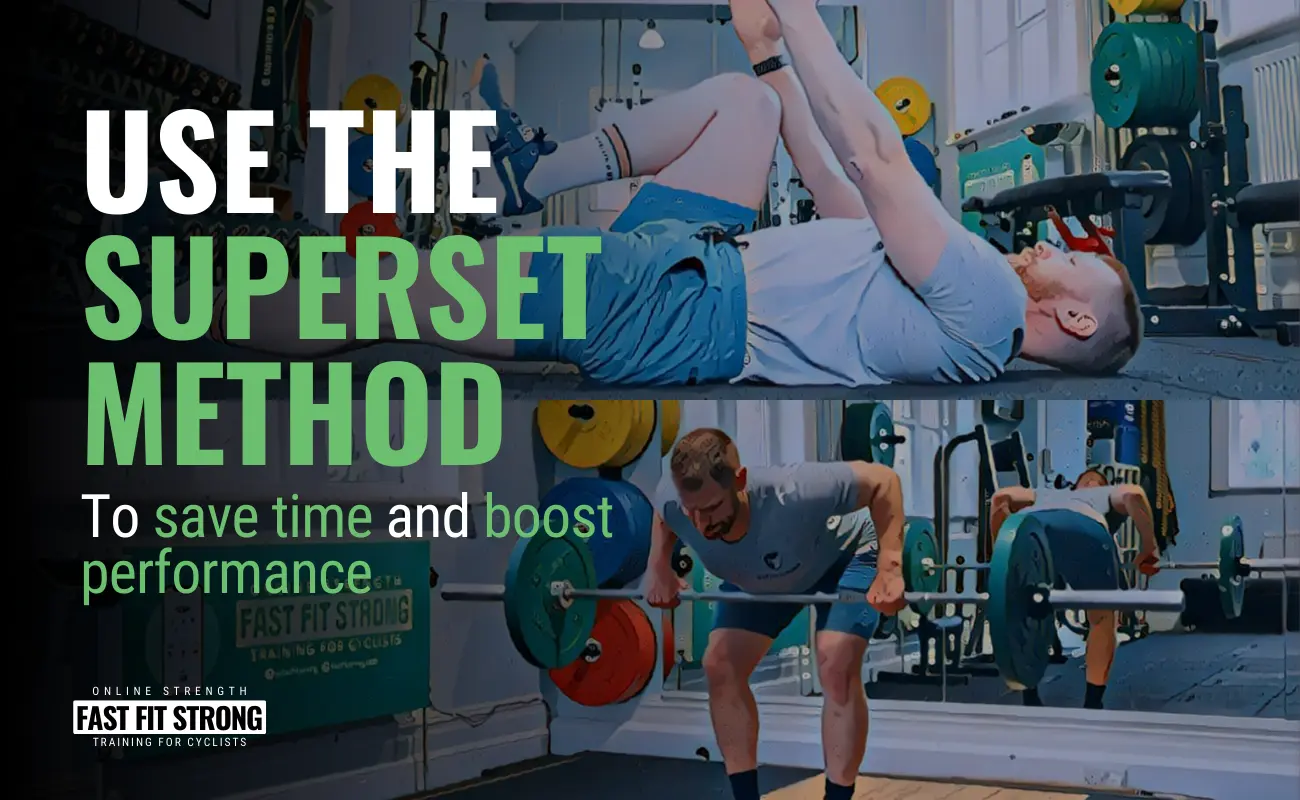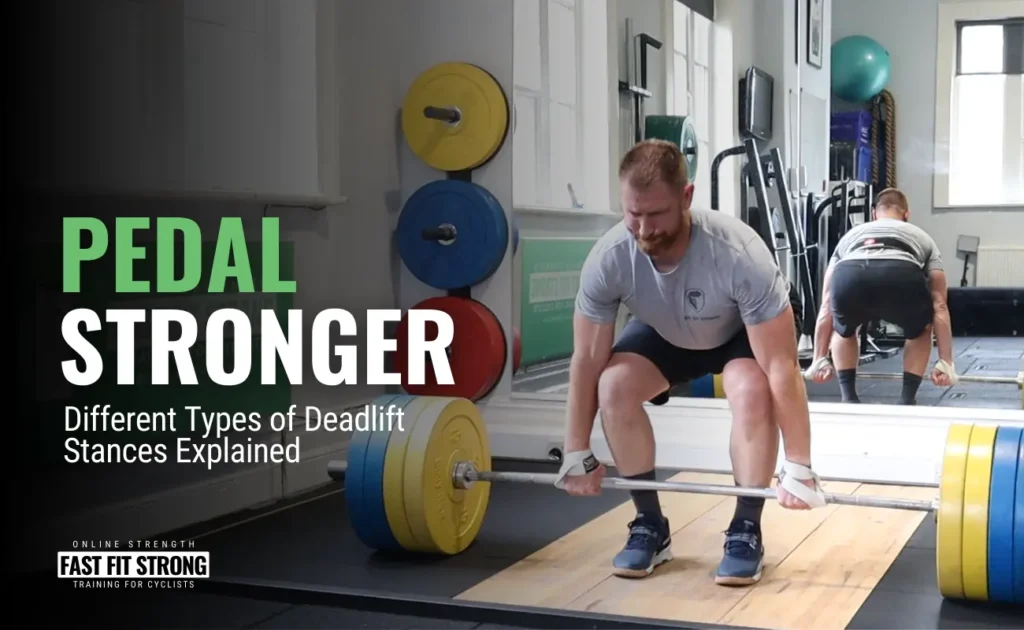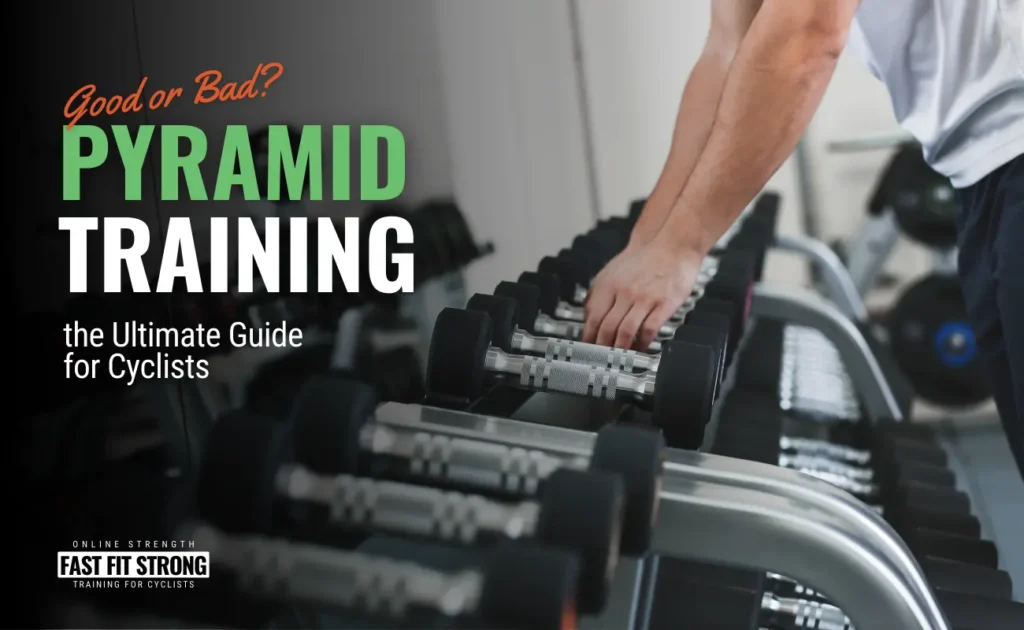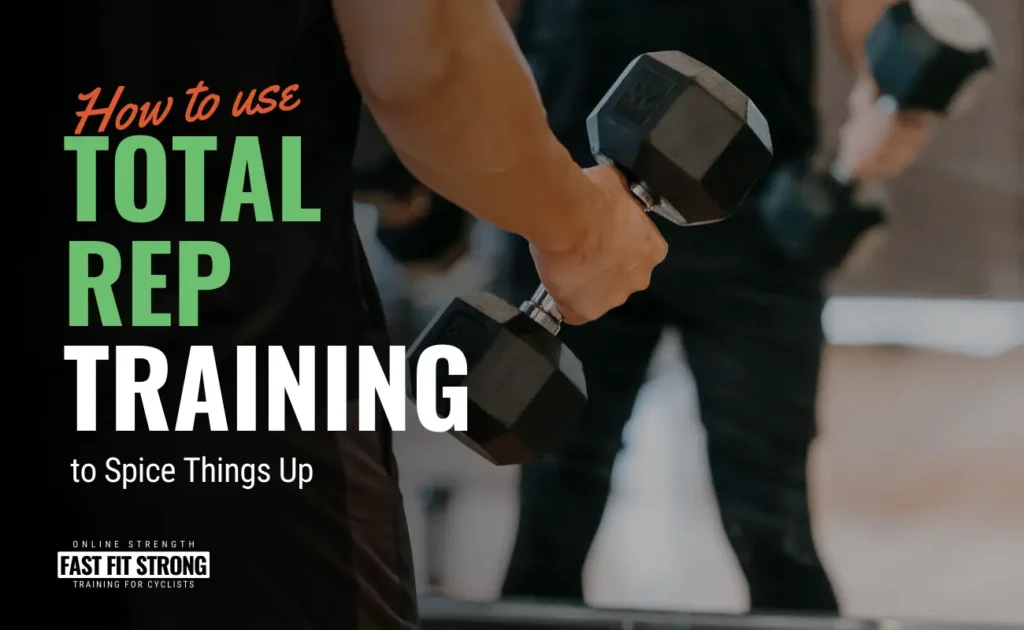Introduction.
For the uninitiated, supersets are a series of 2 (or occasionally more) exercises done back-to-back, resting after the final one. For most people, they are the first higher-stress strength training method you are likely to use and shouldn’t be confused with any form of circuit training!
Supersets are extremely versatile and their potential scope is very large, they can save you time, increase stress (and therefore adaptation), help rehabilitate an injury, improve mobility, decompress your spine, prime your body for upcoming work and much more.
However, most people use supersets the wrong way; pairing movements without any thought or logic behind them. This can leave “gains” left untapped and/or cause too much fatigue.
Below are some commonly used superset pairings along with how I typically use them for my cycling clients.
My Favourite Superset Options.
These are my go-to options for most riders. In fact, I tend to do the first one with complete beginners, as soon as I’m comfortable that they understand each exercise.
Staggered Supersets.
These are my favourite; they make sessions much more time-efficient and, because they reduce the rest time between sets, more interesting for cyclists who typically don’t like standing around and resting!!
I like to pair a core exercise and an upper-body exercise together (for example Deadbugs and Chest-Supported Rows), which allows us to continue to work on specific training schemes (depending on your training goal/phase).
Because the relative intensity is quite high (because you’re doing 2+ exercises back-to-back), I like to reduce the volume slightly and won’t normally do this for more than 3 sets.
Primer Supersets.
I like to use these with riders who are a little more advanced and are very comfortable with the primary exercises (squats, deadlifts, etc).
Similar to the Staggered Supersets, I like to pair a core exercise with a loaded one, however, the loaded exercise here is a unilateral version of the subsequent primary movement.
So, for example, if we are going to be doing squats, our primary superset might look something like this:
- Core Exercise – Half-Kneeling Pallof Press
- Loaded Unilateral Exercise – Cossack Squats
As above, these supersets are time-efficient and the unilateral exercise gets the relevant muscles, joints and nervous system ready for the primary lifts coming up afterwards.
In my experience, most riders have poor hip mobility, so Cossack Squats have the added benefit of improving the position/technique as well.
Mobility Supersets.
If I am coaching a rider who is significantly limited by their lack of flexibility, these can be a great option to introduce extra mobility work without the need for standalone stretching sessions which (let’s face it) rarely get done!!
Because the superset is some form of stretch/mobility exercise, the demand is quite low, so they can be paired with a primary movement to save even more time.
It’s not uncommon for cyclists to have a very rounded back from spending prolonged periods of time in the saddle. This naturally leads to tight chest and shoulders, along with weak and loose upper back muscles (traps, rhomboids, etc). Therefore, it’s a good idea to make one of the primary moves a horizontal pulling exercise (such as a chest-supported row), however, because of the tight chest it can be difficult to pull through the full range of movement…enter the mobility superset!
In this option, the main Chest Supported Row is paired with a mobility exercise (I really like a 90/90 Shoulder Mobilisation).
Decompression (Back Friendly) Supersets.
As lower back pain is the most common cycling-related injury, it’s not unusual to see many riders with bad backs. So, encouraging them to squat, lift, carry and press relatively heavy weights can cause more of an issue. Especially if the rider is still learning how to control themselves in these exercises.
Here’s where decompression supersets can enter the picture.
To plan these effectively, you have to think about how different exercises affect your spine. Some can be classified as compression exercises, some will be decompression exercises and the rest will be more or less neutral exercises. Decompression supersets can be paired with a primary movement (like the mobility supersets) or with a separate exercise (ie as a staggered or primer superset).
Example Compression Exercises.
- Squat (all variations).
- Deadlift (all variations).
- Standing overhead pressing exercises.
- Bent-Over Row.
- Loaded Carries.
Example Decompression Exercises.
- Any kind of hanging (yes, this is a thing! Just hang from rings or a pull-up bar. You’ll feel amazing afterwards).
- Pull-Up (all variations).
- Cable pulldowns
- Dips
- Hanging Leg/Knee Raises
From a planning point of view, anything from the first list can be paired with anything from the second list as a way to decompress your back, relieve some spinal pressure and effectively alleviate lower back pain, while still getting the benefits of the heavier compound movements.
As someone who has ankylosing spondylitis, I regularly get very bad back pain and can testify that this approach is brilliant for managing my spinal health.
Rehab/Injury Prevention Supersets.
Technically, all strength training is injury prevention if you’re doing it right!! But the sport of cycling (like all sports) leaves you susceptible to certain injuries, moreover, if you’ve already been injured you’re far more likely to get injured again.
Therefore, blending specific injury prevention, or rehabilitation work into your routine, as a superset, is a great way to cut down your total training time without compromising the desired outcome.
Typically this kind of supersets involves isolation exercises (to target specific muscles). They can target agonists (similar muscle groups) or antagonists (opposing muscle groups).
Other Superset Options.
The supersets described above are what I generally use with my riders, but there are other options out there.
These tend to be used for very different reasons (typically bodybuilding), which aren’t appropriate for riders, but I thought I’d list some of the most common ones here to explain what they are, how to do them and why I don’t think riders should do them.
Pre-Exhaustion Superset.
These are typically used by bodybuilders or anyone trying to increase muscle size by pairing an isolation exercise (exercise 1) with a compound movement (exercise 2) which uses the same muscle groups. The aim is to fatigue the target area before the main compound exercise, hence the name Pre-Exhaustion.
This is seen as a method to overload the muscles and encourage more growth.
Example.
- Exercise 1 – Lateral Raises.
- Exercise 2 – Military Presses.
Post-Exhaustion Superset.
These are the opposite of the Pre-Exhaustion Supersets above…the order of the exercise is swapped around so that exercise 1 is now the compound movement and exercise 2 becomes the isolation exercise. Increased muscle growth is the desired outcome.
The difference here is that the isolation exercise involves a different movement pattern to overload a larger area and allows you to lift more during the first exercise because you aren’t as fatigued.
Example.
- Exercise 1 – Bench Press.
- Exercise 2 – Pec Flyes.
Compound Supersets.
These pair two primary (multi-joint) movements together, such as Bench Press and Dips to target the same areas.
Depending on the level of progression, I use something like this quite often, by pairing a main lower body lift (eg, Deadlift) with a main upper body exercise (eg Bent Over Row). However, I encourage long recovery periods between each exercise, so it’s more like alternate exercises rather than a true superset.
Conclusion
Supersets are an effective and efficient way of managing your off-bike training, but be careful when deciding which types of exercises you pair together and make sure you can still achieve your training goals.




